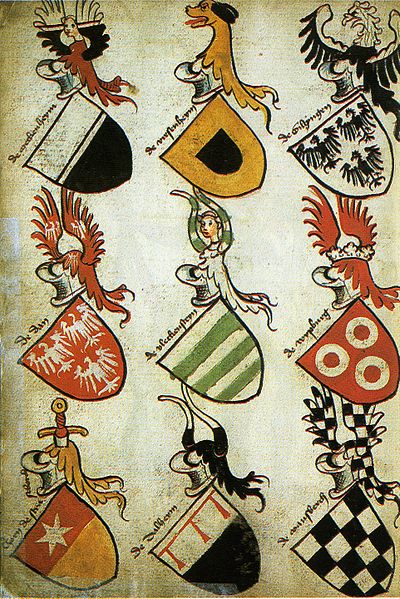The coat of arms of Scotland, colloquially called the Lion Rampant, is the coat of arms historically used as arms of dominion by the monarchs of the Kingdom of Scotland, and later by monarchs of Great Britain and the United Kingdom. The coat of arms, or elements from it, are also used in heraldry to symbolise Scotland in general. The arms consist of a red lion surrounded by a red double border decorated with fleurs-de-lis, all on a gold background. The blazon, or heraldic description, is: Or a lion rampant Gules armed and langued Azure within a double tressure flory-counter-flory of the second.
Heraldic tabard and caparison
Arms of Alexander II, as shown in Matthew Paris's Historia Anglorum, c. 1250
Arms of the King of Scots, from the Wernigerode Armorial, c. 1475
The arms in the Portuguese Livro de Armerio-Mor, c. 1509
A coat of arms is a heraldic visual design on an escutcheon, surcoat, or tabard. The coat of arms on an escutcheon forms the central element of the full heraldic achievement, which in its whole consists of a shield, supporters, a crest, and a motto. A coat of arms is traditionally unique to the armiger. The term "coat of arms" itself, describing in modern times just the heraldic design, originates from the description of the entire medieval chainmail "surcoat" garment used in combat or preparation for the latter.
Coats of Arms in the Dering Roll, an English armorial from the 13th century
Brabant Lion held by Floris de Merode during the funeral of Albert VII, Archduke of Austria, print after design by Jacob Franquart
The German Hyghalmen Roll, c. late 15th century, illustrates the German practice of thematic repetition from the arms in the crest
Arms of the Duke of Richmond c. 1780








